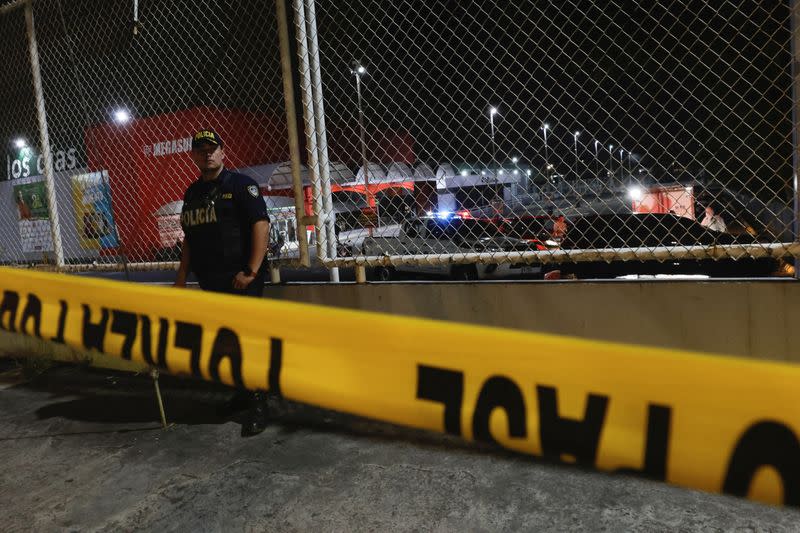Drug onslaught pushes violence to record levels in Costa Rica: Security Minister

- Oops!Something went wrong.Please try again later.
By Alvaro Murillo
SAN JOSE (Reuters) - The influence of Mexican drug gangs and increased cocaine output in Colombia have pushed murders toward record levels in Costa Rica, a top official said, casting a shadow over a country that has long been a beacon of stability in the region.
Costa Rica closed 2022 with a record 656 murders. But 2023 is getting worse: the tally jumped 42% in the first half of the year compared to last year, official data show.
"We've got a Mexicanization of crime," Costa Rican Security Minister Mario Zamora said in an interview with Reuters this week, pointing to increased clashes between gangs in broad daylight that has Costa Ricans worried about both their safety and the impact on tourism, on which the economy heavily depends.
In parts of Costa Rica, authorities are seeing violence synonymous with Mexican cartels like torture, gang killings, and assassinations carried out by highly trained hitmen.
In April, President Rodrigo Chaves presented a set of security measures to tackle surging crime after the Central American country's main business chamber warned of a "national emergency," fearing a hit to foreign investment and tourism.
In May, Chaves named as security minister Zamora, who also held the post under the 2010-2014 presidency of Laura Chinchilla, and has a reputation for being tough on crime.
Zamora said the situation was very different to when he was first security minister. Today, he noted, two-thirds of murders are related to gang disputes over illicit markets, drug routes and territorial control.
The shift showed Costa Rican gangs were influenced by how Mexico's Sinaloa Cartel operated in Central America, he said.
These groups receive cocaine from Colombian gangs as payment for handling local logistics, much of which they send to the U.S. and Europe. Tonnes of the drug have arrived in Europe hidden in fruit shipments from Costa Rica's main port, Moin.
Last week, the government deployed 100 police officers to Moin and debuted a new scanning device to review all goods. The measures are due to be rolled out across Costa Rica by 2025.
Limon, the province where Moin lies, is Costa Rica's most violent, with homicides almost triple the national average.
Authorities say better-trained hitmen are making it harder to bring killers to book.
"We're now facing a situation with many homicides where the perpetrator's unknown," he said, "and not the slightest piece of evidence to tell you who did it."
(Reporting by Alvaro Murillo; Editing by Diego Ore, Sarah Kinosian and Stephen Coates)

